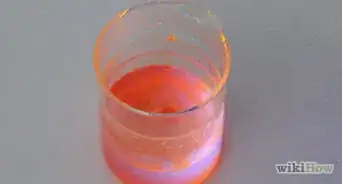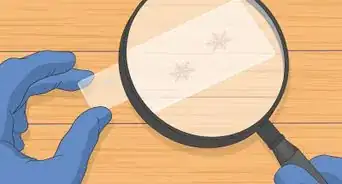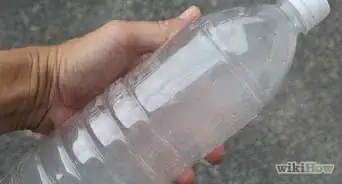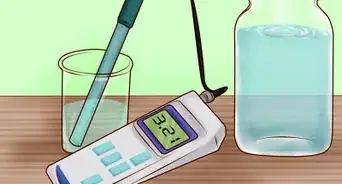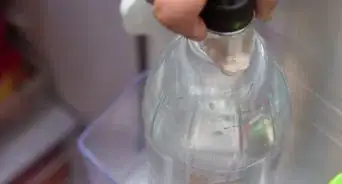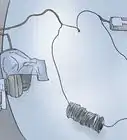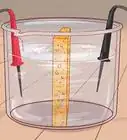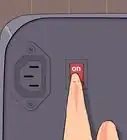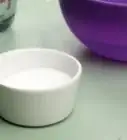This article was co-authored by Bess Ruff, MA. Bess Ruff is a Geography PhD student at Florida State University. She received her MA in Environmental Science and Management from the University of California, Santa Barbara in 2016. She has conducted survey work for marine spatial planning projects in the Caribbean and provided research support as a graduate fellow for the Sustainable Fisheries Group.
This article has been viewed 62,172 times.
Using oil and water, you can make a miniature ocean inside of a plastic bottle. Oil and water naturally separate when mixed together. When you put them together inside a bottle they simulate the waves that you see at the beach. Combining some colored water and oil in the bottle is a fun and exciting way to learn about the properties of water and the way it behaves.[1]
Steps
Making a Wave Bottle
-
1Gather the necessary materials. Wave bottles are pretty easy to make and can be constructed from materials that you already have around your home. To make a wave bottle you will need an empty, clear plastic bottle, water, liquid oil, food coloring, a funnel, and hot glue. You can also include small toys/trinkets like googly eyes or beads to add to the wave bottle.[2]
- You can use baby oil, canola oil, or vegetable oil.
- The funnel is optional, but makes the process less messy.
- The hot glue is also optional, but prevents the bottle from leaking over time.
- Clean the bottle and remove the label before use.
- To make it look more like the ocean, use blue food coloring.
-
2Add water. Place the funnel in the mouth of the bottle and pour water into the bottle until it is almost halfway full. The exact amount of water isn't important, you just want to make sure that you have a good distribution of oil and water at the end. You can even do up to 3/4 full of water, if you desire.[3]
- Add a few drops of food coloring to the water and swirl to mix.
Advertisement -
3Pour oil on top of the water. Keep the funnel in place and pour the oil into the bottle. The exact amount added will vary depending on the size of your bottle. Keep pouring until the bottle is almost full. If you're adding decorations make sure you leave enough space so the bottle doesn't overflow.[4]
- At this point, you can drop in any decorations that you want. Add beads, glitter, or any other small trinkets you'd like.
- You can pour the oil slowly or quickly. If you let the oil and water sit, they will separate over time.
-
4Glue the lid onto the bottle. To prevent the wave bottle from leaking over time, it's a good idea to glue the lid shut. This step should be done by an adult because it involves hot glue. Squeeze some hot glue around the rim of the bottle and then screw the lid on shut before the glue dries.[5]
- Alternatively, you can use superglue to seal the lid.
- Sealing the lid will also prevent anyone from accidentally drinking the solution.
-
5Tilt the bottle to make the wave. Hold the bottle horizontally and gently tilt it up and down. As you tilt, watch the water make a wave in the oil. You can even shake the bottle and watch how the oil and water mix with each other. Over time, they will separate again.[6]
- The oil and water separate because oil is less dense than water. It is floating on top of the water.
Creating a Learning Experience
-
1Ask a scientific question. In this experiment you will be observing the different properties of oil and water. The question you will be answering is “What happens when oil and water mix?” Ask your child about any times they may have seen oil and water together.[7]
- They may have seen oil and water while cooking pasta, using salad dressing, or oil in water puddles in a parking lot.
-
2Write a hypothesis together. Ask your child what they think will happen when they try to mix oil and water together. Will they mix evenly so that you can't even tell them apart or will they separate from each other so that they're easily distinguishable?[8]
- Talk about how a hypothesis is an educated guess about what will happen in the experiment.
- This experiment is appropriate for all ages, but discussing a hypothesis is best for ages 5+.
-
3Make some observations and discuss density. As you pour the oil on top of the water discuss what is happening. Your child should notice that the oil is sitting on top of the water or that little bubbles of oil have formed within the water.[9]
- Did your observations match your hypothesis?
- Density is a property that everything has and refers to the amount of mass it has in terms of the volume it takes up. Something that is very dense will be very heavy even if it is small. Something that is not very dense will be very light even though it is large.[10]
- The metal lead is very dense, while a piece of foam is much less dense.
- Oil is less dense than water and therefore, floats on top of the water.
Warnings
- Do not drink this! Consuming large amounts of oil can be hazardous to your health.⧼thumbs_response⧽
References
- ↑ http://www.kidspot.com.au/things-to-do/activities/wave-in-a-bottle-experiment
- ↑ http://www.education.com/activity/article/surf_in_a_bottle/
- ↑ http://www.kidspot.com.au/things-to-do/activities/wave-in-a-bottle-experiment
- ↑ http://handsonaswegrow.com/wave-bottle-sensory/
- ↑ http://handsonaswegrow.com/wave-bottle-sensory/
- ↑ http://www.thenakedscientists.com/HTML/experiments/exp/slow-waves/
- ↑ http://sugarspiceandglitter.com/wave-in-a-bottle-science-experiments-for-kids/
- ↑ http://sugarspiceandglitter.com/wave-in-a-bottle-science-experiments-for-kids/
- ↑ http://sugarspiceandglitter.com/wave-in-a-bottle-science-experiments-for-kids/
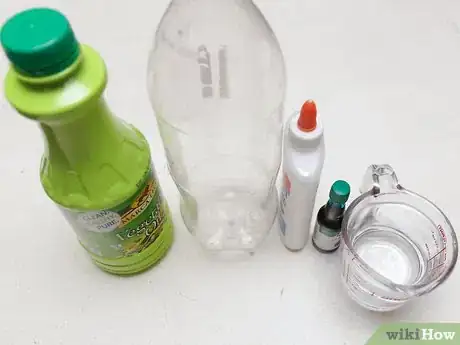
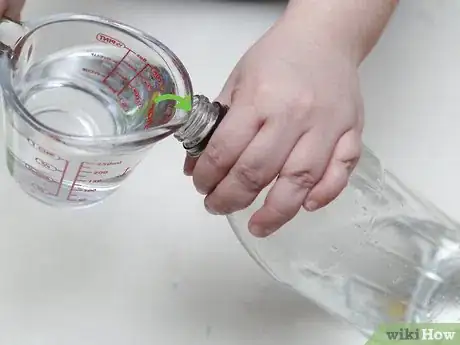
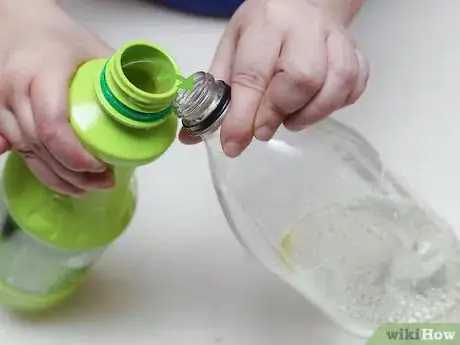
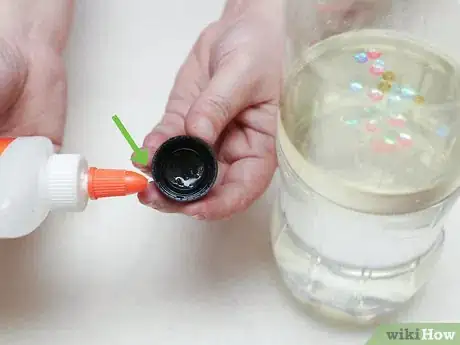
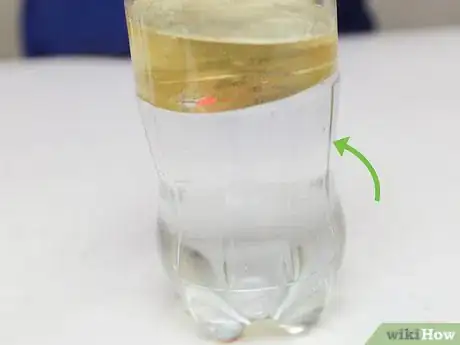

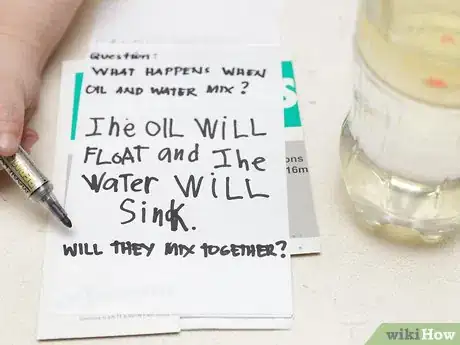
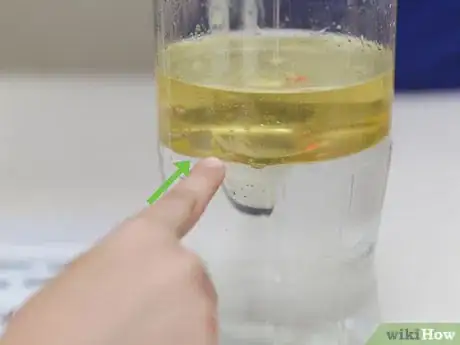

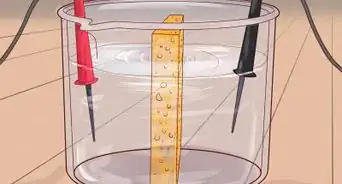
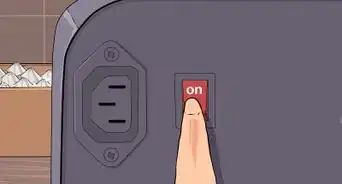
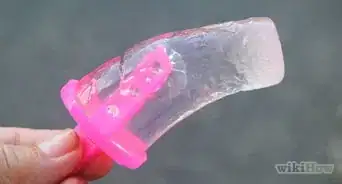
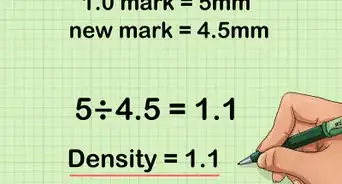
-Step-15.webp)
